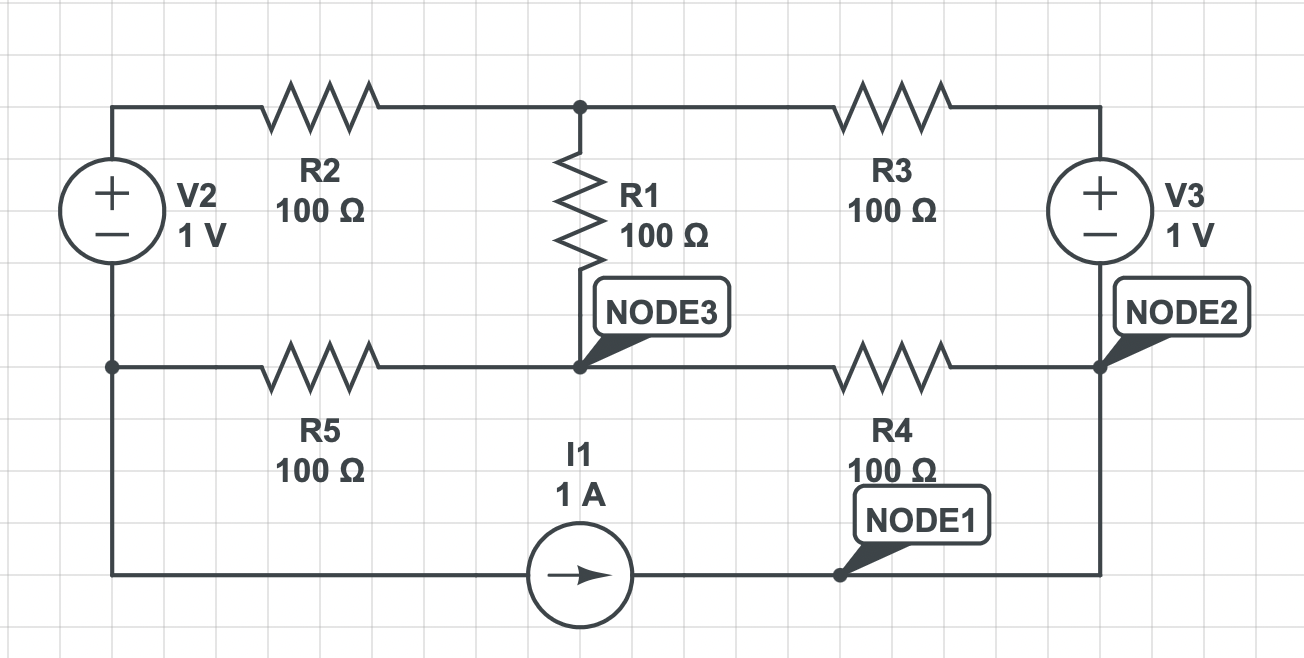Lets say I have this circuit below and I want to solve it using the Mesh Method.
For every essential loop I define the current loops \$i_a\$ (left), \$i_b\$ (right), and \$i_c\$ (below) clockwise. The mesh equations are:
$$-V_2 + R_2i_a + R_1(i_a-i_b) + R_5(i_a-i_c) = 0$$ $$V_3 + R_4(i_b-i_c) + R_1(i_b-i_a) + R_3i_b = 0$$ $$i_c = -I_1 = -1$$
When it comes to the \$i_c\$ loop I know that \$I = -1\$, but how is it true that the whole \$i_c = -1\$? Isn't the current splitting at node 2?
Why is it true that the current passing through the wires conflicting with the opposing effect of loops \$i_a\$ and \$i_b\$ are exactly -1 A?
It is not intuitive to me why it is the case and/or if it is always the case. It is really bugging me.

